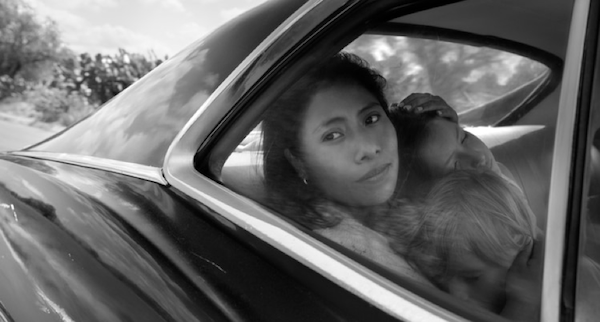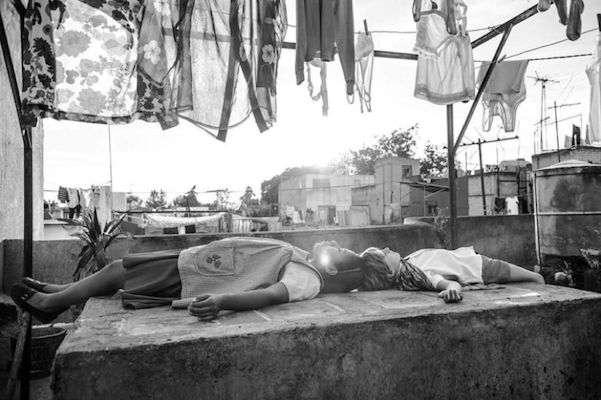
Getting to see the film Roma on the big screen, before it was released on Netflix, was truly an odyssey. In Monterrey, Mexico, where I live, I had to buy a ticket a week in advance.
Monterrey is home to a prominent and privileged population, who usually contract live-in domestic workers from indigenous communities, like Cleo in the film. This was the site of the ethnographic research for my book Yo trabajo en casa, published in 2017, which discusses the naturalizing of gender, class, and racial inequalities in this stigmatized occupation.
It was worth the wait: the film is beautiful and the cinematography extraordinary. The story of Cleo and a bourgeois family that lives in the Roma neighborhood of Mexico City, during the presidency of Echeverría (1970-1976), is narrated from the point of view of the family’s youngest child. In the final scene, this little one sleeps in Cleo’s lap, while his sister leans on the shoulder of the worker, who just saved her from drowning in the sea.
Cleo starts her day before everyone else, like the moon ushering in the sun, along with her co-worker the cook, also of mixteca background. She puts the children’s lunches in their backpacks during the morning frenzy before the rush to school, she cleans up the friendly black dog’s excrement in the patio, she goes from one bedroom to the next making beds and picking up clothes to the music on the radio. Then she runs to pick up the children as school lets out.
This is the daily routine, until the señora arrives, followed by her husband. And then it is Cleo who turns out all of the lights in the house and goes upstairs where she shares the maid’s apartment with her counterpart. By candlelight, to save electricity, they giggle as they do exercises to stay in shape, just like the well-off ladies do.
Caring and loving. Being cared for and feeling loved. Playing war, playing dead, on the roof of the house, the kingdom of the gatas (cats, slang for domestic workers). The derisive nickname gatas, the Mexican novelist Elena Poniatowska once told me in an interview, is given to domestic workers because they walk on the roofs of buildings. This space, where women work and the children they care for play, is beautifully rendered in the film, as seen in the early scene of the boy playing dead and observing the sun filtered through the women’s undergarments hung out to dry.

Through the depiction of the Halconazo (known in English as the Corpus Christi massacre), the film represents not only state violence, but also the patriarchal violence that condemns Cleo to never enjoy her own motherhood, to only care for another woman’s children.
It seems like little or nothing has changed in 50 years, as workers like Cleo still sustain the lives of the families that are privileged enough to employ them. Long, exhausting days, access to healthcare at the whim of the employer, “vacations” during which they still have to do childcare, etc.
Roma accurately reveals how domestic workers like Cleo become alternative mother figures, who provide protection and trust for children, and allow them to weather ocean storms, for example, when their world is wrecked by their parents’ divorce. The film bares the taboo, unspoken affective bonds that are created between children and their caregivers, whose own motherhoods are relegated to second place, or even made impossible.
This article was translated from Spanish by Erynn Masi de Casanova.

No Comments